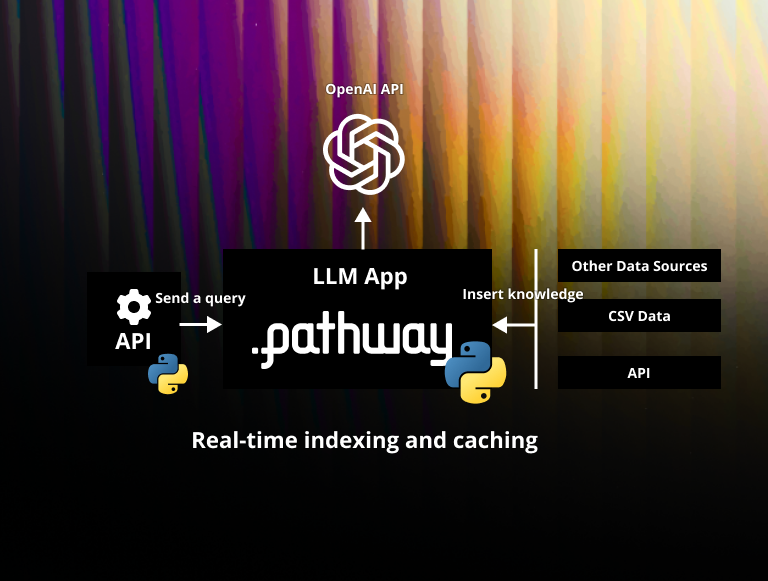What is Fuzzy Join and How Can it Help You Make Sense of Your Data?
 Olivier Ruas
Olivier RuasWhat is Fuzzy Join and How Can it Help You Make Sense of Your Data?
Fuzzy join is a data enrichment technique that allows you to match data based on approximate rather than exact matches. With fuzzy join, you can make the most out of your (noisy) data.
Have you ever struggled to match data from different sources because of inconsistencies in the data? You're not alone. Inaccurate and incomplete data can be a significant roadblock for businesses, preventing them from making informed decisions. Fortunately, there's a solution: fuzzy join.
A fuzzy join is a technique used to match data that may not be a perfect match due to inconsistencies or errors. Instead of an exact match, fuzzy join uses an approximation, allowing for more flexibility and accuracy in matching data.
Data enrichment is crucial because it is what turns raw data into pure gold. By adding new information or filling in missing data points, data analysts and engineers can enhance their datasets and gain new insights that would be impossible with raw data alone. Joining tables with typos or simply different formats can be challenging. Fortunately, fuzzy joins allow you to match data based on approximate rather than exact matches and uncover hidden patterns.
Fuzzy Join: Common Techniques
The fuzzy join will highly depend on the tolerated approximations. There are several approximations fuzzy join can use depending on the chosen use case. Some of the most common approximations include:
- Phonetic matching: This approximation matches words based on their pronunciation rather than their spelling. It is useful when matching data with misspellings or variations in spelling.
- Token-based matching: This approximation matches data based on common tokens or phrases rather than exact matches. It is useful when matching data that has variations in format or when matching data with typographical errors.
- Distance-based matching: This approximation matches data based on similarity, measured using the distance between two strings. Standard string distances such as Levenstein, Jaccard, Hamming, and cosine can be used. This approximation is useful when matching data with typographical errors or variations in spelling.
- Regular expression matching: This approximation matches data based on regular expressions and patterns describing a set of strings. It is useful when matching data that follows a specific format or data with variations in the format.
Most techniques calculate the confidence level for matching pairs and only retain those exceeding a specified threshold.
With those approximations, a system using fuzzy join can overcome the most common hardships:
- Misspelling
- “Elizabet” ≈ “Elizabeth” or phonetic spelling
- Abbreviations
- “fb” ≈ “Facebook”
- Acronym
- “SQL” ≈ “Structured Query Language”
- Lower/upper case
- “James” ≈ “james”
- Different formatting
- date formatting: DD/MM/YYYY v.s. DD/MM/YYYY
- Translations variations: “Mao Zedong” ≈ “Mao Tse-tung”
- …
- Initials
- “John Fitzgerald Kennedy” ≈ “John F. Kennedy”
- Variation in names
- Alternate names: Myanmar/Burma
- Nicknames: “Beth” ≈ “Elizabeth”
- Name order variations: “Jacques Martin” ≈ “Martin Jacques”
- …
While those techniques for fuzzy join cover most of the use cases, it's essential to remember that the appropriate method for your specific use case may differ. Suppose you want to join a store dataset with a customer dataset to match customers to stores based on their geographic location. In that case, you will need a metric based on geographic distance using GPS positions instead of the standard NLP techniques. Data analysts and engineers can choose the best matching method for their specific use case and achieve the most accurate results.
Fuzzy join: Challenges and Limitations
Fuzzy joins are a flexible and efficient means of enriching data, but there are some downsides to consider.
One major challenge is determining the appropriate level of approximation - a threshold set too high could result in broad matches and false positives. At the same time, a too-low threshold might exclude relevant data. Achieving the right balance may take some trial and error and is time-consuming.
Matching Jon Smith in York (UK) with John Smyth in New York (US) is an instance of how fuzzy joins can produce false positives, but it is worth noting that homonyms present a challenge for standard joins as well.
Fuzzy joins can be computationally expensive, which may pose a challenge for organizations with limited computing resources or tight deadlines. Additionally, they may not be suitable for all data types or use cases, especially when data accuracy is crucial, such as in medical or financial contexts. Fuzzy joins may also struggle with complex or unstructured data, requiring a more precise matching method.
Conclusions
In conclusion, fuzzy joins are a powerful technique for data enrichment that can help you extract more value from your data. By allowing for approximate matches based on user-defined thresholds, fuzzy joins can help find connections that might otherwise go unnoticed. However, as with any tool, fuzzy joins have their limitations and potential drawbacks, such as false positives and computational cost. It's essential to carefully consider these factors when deciding whether to use fuzzy joins for a particular dataset or use case. Ultimately, by understanding the benefits and limitations of fuzzy joins, you can make more informed decisions about how to leverage this powerful tool to unlock new insights from your data.
If you want to see how to perform a fuzzy join with Pathway, check out our example.
- Olivier Ruas
 blog · tutorial · engineeringApr 5, 2023What is Fuzzy Join and How Can it Help You Make Sense of Your Data?
blog · tutorial · engineeringApr 5, 2023What is Fuzzy Join and How Can it Help You Make Sense of Your Data?  Bobur Umurzokov
Bobur Umurzokov blog · tutorial · engineeringAug 28, 2023How to use ChatGPT API in Python for your real-time data
blog · tutorial · engineeringAug 28, 2023How to use ChatGPT API in Python for your real-time data Saksham Goel
Saksham Goel blog · tutorial · engineeringFeb 5, 2025Real-Time AI Pipeline with DeepSeek, Ollama and Pathway
blog · tutorial · engineeringFeb 5, 2025Real-Time AI Pipeline with DeepSeek, Ollama and Pathway
